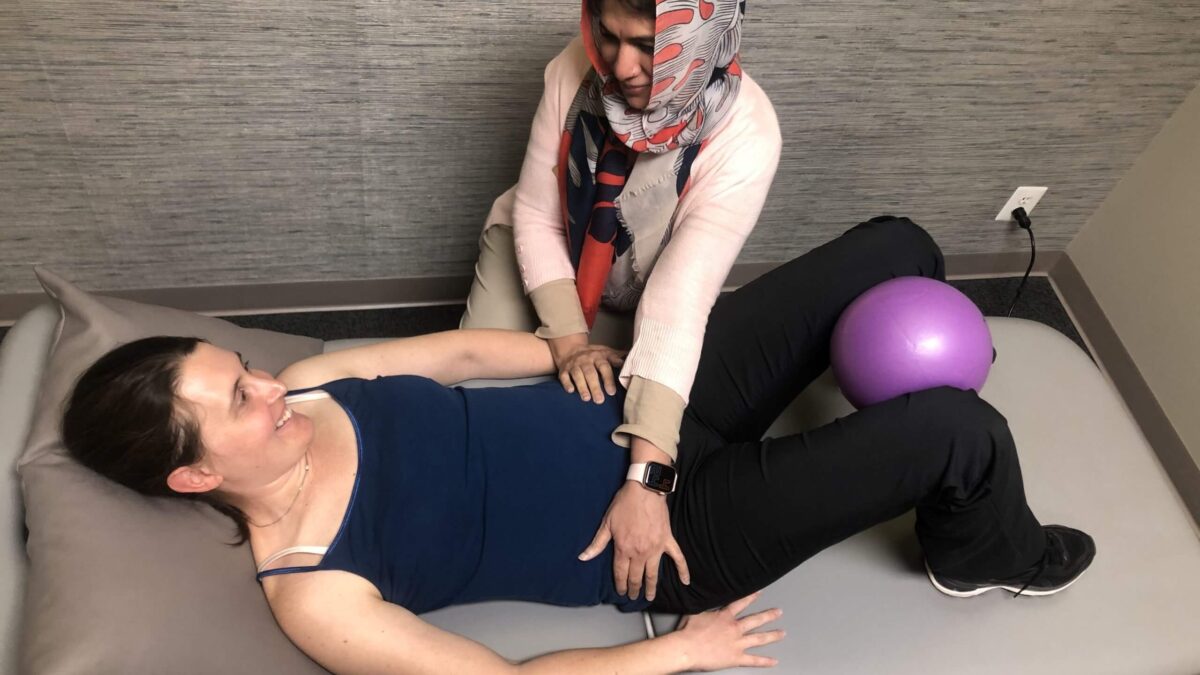What is pelvic floor dysfunction?
The pelvic floor comprises connective tissues and muscles. These soft tissues are connected to your pelvis and bones. The pelvic floor muscles are essential to daily function. These muscles support pelvic organs including, the vagina, cervix, uterus, anus, urethra, bladder, and intestines.
Any injury to these muscles can cause pelvic floor dysfunction. Pelvic floor dysfunction is a common condition that can make you unable to coordinate and relax your pelvic floor muscles to have a bowel movement. Due to this condition, you may have:
- Stool or urine leakage
- An incomplete movement of bowel
- Trouble releasing a bowel movement
Causes of pelvic floor dysfunction
Different conditions and factors can develop pelvic floor dysfunction, including:
- Pelvic surgery
- Overuse of pelvic muscles
- Injury to pelvic muscles
- Traumatic injury
- Pregnancy
- Being overweight
Symptoms
- Lower back pain
- Urinary leakage
- Straining to defecate
- Pelvic fullness or pressure
- Pain with sexual intercourse
- Pelvic muscle spasms
- Pain in the pelvic region or genitals
- Difficulty emptying the bladder
- Urinary incontinence
- Constipation, difficulties with bowel movements
- Bowel leakage
- Painful urination
If you are experiencing the symptoms of pelvic floor dysfunction, your doctor or physical therapist may recommend pelvic floor therapy.
Pelvic floor therapy
Pelvic floor dysfunction can affect your pelvic organs and sexual life. But the good news is that strengthening and training pelvic floor muscles have shown to be helpful in different conditions. A licensed therapist can help you diagnose your conditions and develop a personalized pelvic floor therapy treatment plan to train and strengthen your pelvic floor muscle.
Conditions treated by pelvic floor therapy
Pelvic floor therapy can be used for different conditions, including:
- Pregnancy-related pain
- Testicular pain
- Urinary incontinence, frequency, and urgency
- Painful urination
- Bladder and bowel movements
- Fecal incontinence
- Endometriosis
- Menopause symptoms
- Pain in the abdomen, thigh, pelvis, hip, or lower back
- Rectal pain
- Unexplained pain
- Endometriosis
- Postpartum and pregnancy wellness
- Interstitial cystitis (IC)
- Constipation
- Endometriosis
- Vaginismus
- Premature ejaculation
- Male disorders
Techniques of pelvic floor therapy
The goals of pelvic floor therapy are to help you reduce the pain and regain the functionality of pelvic floor muscles. A personalized pelvic floor therapy may include different techniques to treat pelvic floor dysfunction including, biofeedback, manual therapy, electrotherapy and pelvic floor retraining.
Pelvic floor muscle retraining
If you have pelvic floor dysfunction, strengthening the muscles helps decrease the severity of symptoms, including incontinence, urinary leakage, lower back pain, and pelvic pressure.
Additionally, it can help with bowel and bladder control.
A trained therapist will first offer you awareness techniques to ensure you are doing the correct exercises. They will teach you:
- How to relax overactive or tight muscles
- How to identify and activate the correct pelvic floor muscles
- How to control abdominal pressure
- How to integrate functional exercises
- How to do the correct exercises at the right time
- How to coordinate the pelvic floor muscles with abdominals, diaphragm, and other core muscles
Manual therapy
Many therapists utilize manual therapy to treat pelvic floor dysfunction. Manual therapy aims to relax, mobilize, and lengthen the pelvic floor muscle. Experts use their hands and fingers to apply gentle pressure. This process helps relax tight muscles and relieve ligament, muscles, nerve, and joint pain. Therapists may use different manual techniques such as
- Trigger point pressure
- Visceral mobilization
- Connective tissue manipulation
- Muscle energy technique
- Joint mobilization
- Myofascial release
- Soft tissue mobilization,
- Urogenital mobilizations
- Deep tissue massage
Biofeedback
A therapist uses biofeedback to check pelvic floor muscle health. In this technique, an expert inserts a probe into a woman’s vagina or a man’s anus to measure the muscle strength and resting tone. This technique provides information on a computer screen about how strong a patient relaxes and contracts a group of muscles.
Electrotherapy
Physical therapists can utilize electrostimulation techniques to activate weak pelvic floor muscles. This technique can also help you to relieve chronic pain and muscle spasm.
Final words
Visit a trusted hospital or clinic if you are experiencing bladder control problems, discomfort, pain, or symptoms related to pelvic floor dysfunction. Pelvic floor therapy and strengthening exercises can help you to relax your muscles and improve overall health. Avoiding pelvic floor pain can be harmful for your health and affect the quality of your life.


